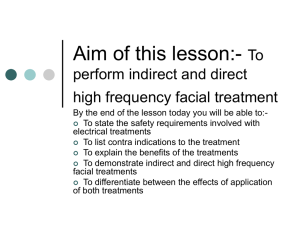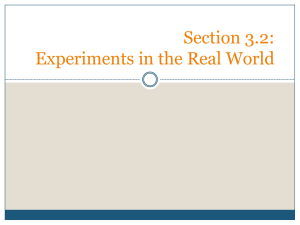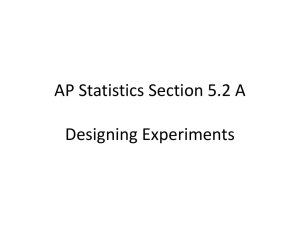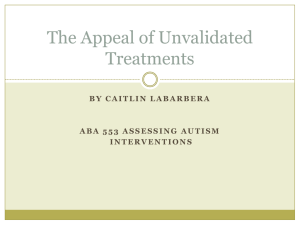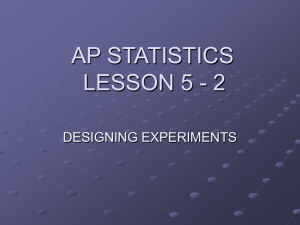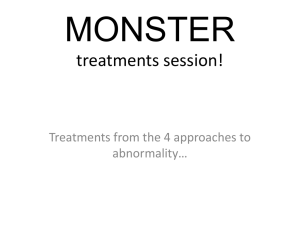Introduction to Biological Psychology
advertisement
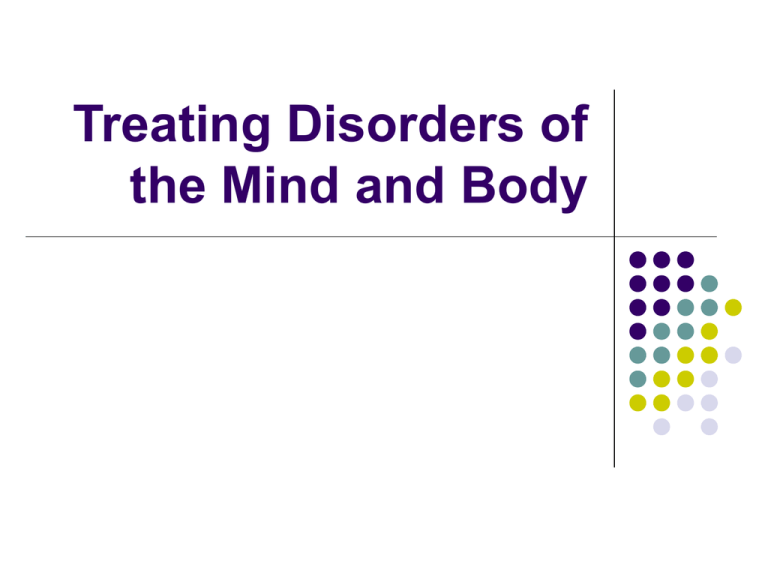
Treating Disorders of the Mind and Body Overview of Chapter Questions: How Is Mental Illness Treated? What Are the Most Effective Treatments? Can Personality Disorders Be Treated? How Should Childhood Disorders Be Treated? How Is Mental Illness Treated? Psychotherapy Is Based on Psychological Principles Biological Therapies Are Necessary for Some Disorders Common Factors Enhance Treatment Psychotherapy Is Based on Psychological Principles Psychodynamic therapy focuses on insight Humanist therapies focus on the whole person Behavioral therapy focuses on observable behavior Cognitive-Behavioral therapy focuses on faulty cognitions Group therapy builds social support Family therapy focuses on family context Psychodynamic therapy focuses on insight Freudian “psychoanalysis” uses free association and dream analysis to bring unconscious unresolved conflict into focus The goal is to produce insight, which leads to behavior change and symptom improvement Post-Freudian reformulations are called “psychodynamic approaches” Humanist therapies focus on the whole person Rogers’ “Client-centered therapy” uses reflective listening to help persons clarify their deeply held personal concerns Rogers’ approach also promotes “unconditional positive regard” as a therapeutic element Rogers’ approach aims to achieve “fullyfunctioning” persons who are “self-actualized” as described by Maslow Behavioral therapy focuses on observable behavior Behavior is learned and can be unlearned Behavior Modification uses operant conditioning But social learning perspectives are used in practice (social-skills, modeling, etc) Exposure treatments, like systematic desensitization, focus on phobic avoidance Cognitive-Behavioral therapy focuses on faulty cognitions Cognitive therapy sees disorder as rooted in distorted thoughts Cognitive restructuring targets maladaptive thought patterns Ellis’ Rational-Emotive-Therapy pioneered cognition as cause and cure CBT integrates cognitive and behavioral interventions Group therapy builds social support Group therapies offer specific advantages Groups vary in structure and orientation Groups vary in degree of focus on insight, social support, and cognitive or behavioral change Family therapy focuses on family context Family systems approaches recognize that individual change is contextual, so why not engage the whole system? Studies of schizophrenic families show that high levels of expressed emotion (EE) are associated with risk for relapse, and reducing EE reduces relapse! (see figure 14.4) Biological Therapies Are Necessary for Some Disorders Psychotropic medications affect neurotransmitter processes Anti-anxiety drugs affect GABA Biological Therapies Are Necessary for Some Disorders Antidepressant drugs: MAO inhibitors Trycyclics SSRI’s (see fig 14.5) Antipsychotic drugs: Common Factors Enhance Treatment Psychotherapy helps, and common underlying factors contribute to all psychological approaches: Caring Therapists Catharsis and “Confession” What Are the Most Effective Treatments? Treatments That Focus on Behavior and Cognition Are Superior for Anxiety Disorders Many Effective Treatments Are Available for Depression Lithium Is Most Effective for Bipolar Disorder Pharmacological Treatments Are Superior for Schizophrenia Treatments That Focus on Behavior and Cognition Are Superior for Anxiety Disorders For specific phobias, the sources of anxiety are better addressed with cognitivebehavioral approaches than with medication Systematic Desensitization uses “fear hierarchies” (see fig 14.7) to help people learn to manage dimensions of fear Virtual treatments can reduce fear responses Treatments That Focus on Behavior and Cognition Are Superior for Anxiety Disorders SSRI’s help social phobia, but cognitive and behavioral methods are treatments of choice Panic Disorder treatments often combine medication and CBT, but relapse is less with CBT Treatments That Focus on Behavior and Cognition Are Superior for Anxiety Disorders OCD treatments blend medication and CBT with a focus on “exposure” and “response prevention” (see fig 14.10) Many Effective Treatments Are Available for Depression MAO-inhibitors, tricyclics, and SSRI’s provide relief to 60-70% of depressed persons Cognitive-Behavioral Treatments are just as effective, and target the automatic irrational thoughts that accompany depression (see fig 14.11) Many Effective Treatments Are Available for Depression Seasonal Affective Disorder (see fig 14.12) responds to phototherapy Exercise helps depression too Electroconvulsive therapy (ECT) is the single most effective treatment for severe depression, and it saves lives, negative public views notwithstanding Transcranial magnetic stimulation (TMS) Lithium Is Most Effective for Bipolar Disorder Only 20% of bipolar patients who maintain their medications experience relapse Lithium stabilizes mood, but the mechanisms are unclear, and the effect is greater on mania than depression But many patients discontinue medication, perhaps because of the “intoxicating pleasure” of manic states Pharmacological Treatments Are Superior for Schizophrenia Haloperidol and Chlorpromazine revolutionized the treatment of schizophrenia But significant sedative and motor side effects, resembling Parkinson’s disease, make treatment unpleasant for many patients Tardive dyskinesia Clozapine (see fig 14.15) Pharmacological Treatments Are Superior for Schizophrenia Despite the superiority of pharmacology, psychosocial treatments improve functioning beyond drug treatments (see fig 14.16) Can Personality Disorders Be Treated? Dialectical Behavior Therapy Is Most Successful for Borderline Personality Disorder Antisocial Personality Disorder Is Difficult to Treat (see figure 14.19) How Should Childhood Disorders Be Treated? Children with ADHD Can Benefit from a Variety of Approaches Autistic Children Benefit from a Structured Treatment Approach Children with ADHD Can Benefit from a Variety of Approaches Methylphenidate (ritalin) targets under active brains and reduces negative behaviors (see fig 14.20) Side effects and lack of long-term efficacy limit the utility of ritalin Behavioral Treatments, though timeconsuming, augment medication and help social skills, academics, and family relationships Autistic Children Benefit from a Structured Treatment Approach Generalization of skills must be taught explicitly Applied Behavior Analysis (ABA) is time intensive but raises IQ points by 20 on average The long-term prognosis for autism is poor
